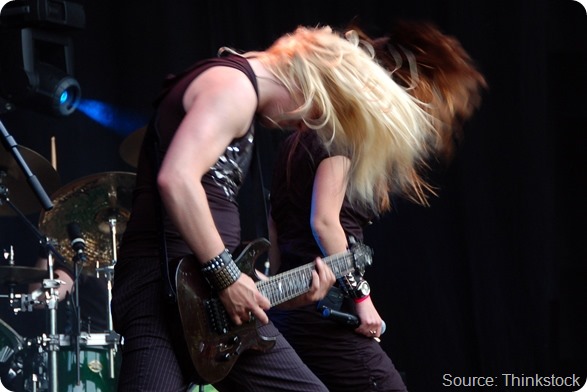A recent report in the Lancet describes the case of a man who developed bleeding in the brain after headbanging at a Motörhead concert.
Early last year, a 50-year-old man presented at the neurosurgical department of Hannover Medical School, Germany with a persistent headache in all of his head that had been present for 2 weeks and was getting worse.
The man had an unremarkable medical history and had not experienced any head trauma. However, he did report that he had been to a Motörhead concert 4 weeks earlier where he had been headbanging.

Since Motörhead are renowned for fast tempo heavy metal songs that have an underlying rhythm of 200bpm, headbanging at their concerts can require very rapid violent movements of the head in order to stay in time with the music.
A computed topography (CT ) scan of the man's head showed that he had a chronic subdural haematoma on the right side of his brain. Chronic subdural haematoma is a form of traumatic brain injury in which blood collects beneath the outer protective membrane of the brain (the dura). It is a condition that commonly develops over days or weeks rather than becoming immediately apparent.
The haematoma was removed surgically by inserting a drainage tube through a small hole drilled into the skull (burr hole) to allow the blood to drain away from the brain. The man's headache subsided and he was found to be well 2 months after surgery.
Although headbanging is generally considered to be a harmless means of appreciating rock music, it has been associated with a range of serious head and neck injuries, including damage to the artery supplying blood to the head (carotid artery), whiplash, and neck fracture.
This is the first reported evidence that headbanging can cause chronic subdural haematoma. The incidence may however be higher since, as Dr Ariyan Pirayesh Islamian explains, "the symptoms of this type of brain injury are often clinically silent or cause only mild headache that resolves spontaneously”.
“This case serves as evidence in support of Motörhead’s reputation as one of the most hardcore rock’n’roll acts on earth, if nothing else because of their music’s contagious speed drive and the hazardous potential for headbanging fans to suffer brain injury.”
Sources
Islamian AP, et al. Chronic subdural haematoma secondary to headbanging. Lancet 2014;384:102. Available at: http://www.thelancet.com/journals/lancet/article/PIIS0140-6736(14)60923-5/abstract